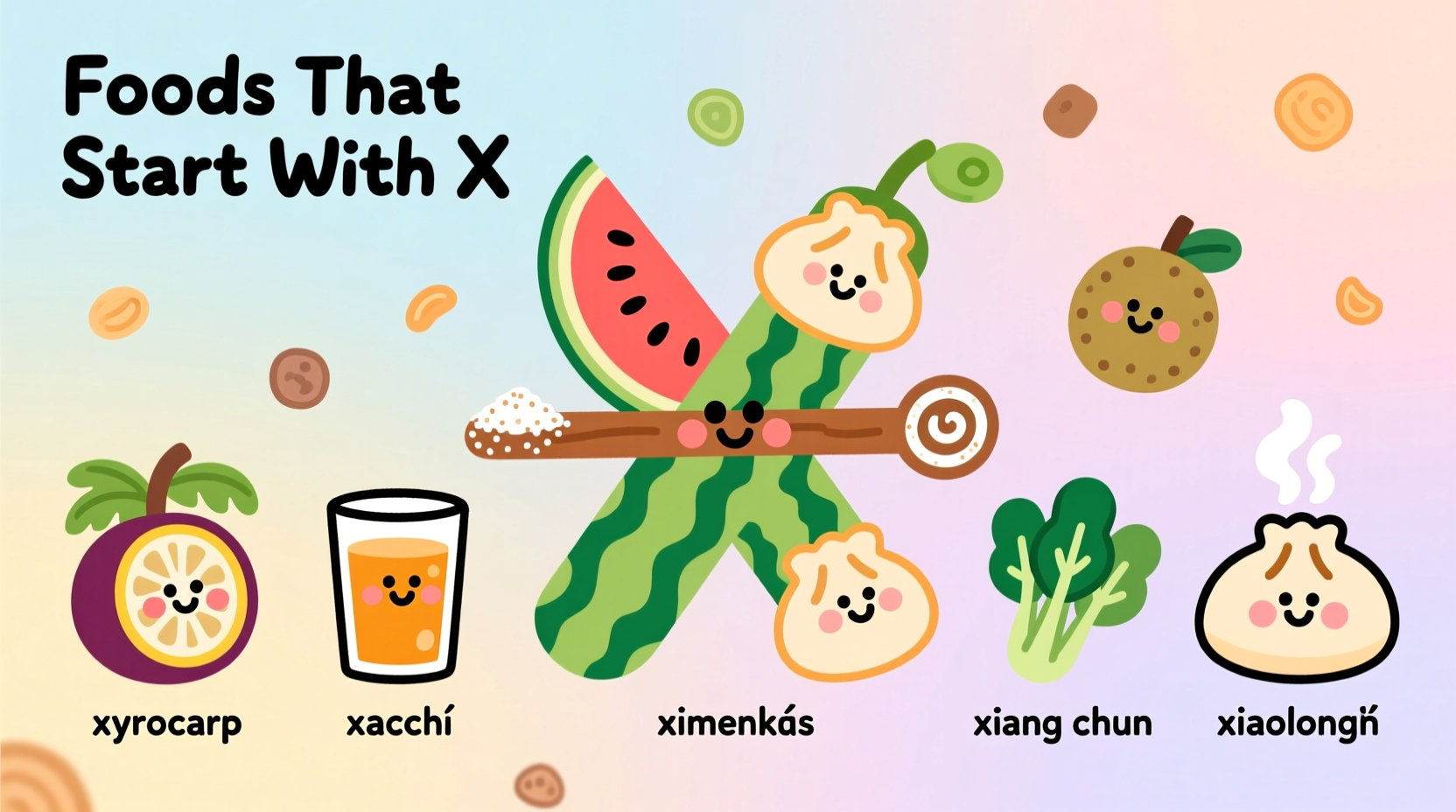Ever found yourself stuck in a game of Scrabble or trivia night when the category is “foods starting with X”? You're not alone. The letter X presents one of the most challenging linguistic hurdles in English food nomenclature. Let's explore why this is the case and identify the genuinely authentic options that exist.
The Linguistic Challenge of X in English Food Names
Understanding why X foods are so scarce requires examining English language evolution. Unlike Spanish (where X often represents the “sh” sound) or Greek (where X is common), English inherited few words beginning with X from its linguistic ancestors. Most English words starting with X entered the language through Greek roots (like “xylophone”), but these rarely applied to food items.
According to linguistic research from Merriam-Webster, X begins less than 0.02% of all English words. This statistical rarity directly impacts food naming conventions. When European explorers encountered new foods, they typically adapted indigenous names to fit English phonetics, often dropping the X sound in the process.
| Letter | Percentage of English Words Starting With This Letter | Foods Starting With This Letter |
|---|---|---|
| A | 11.5% | Apple, avocado, asparagus |
| E | 7.8% | Egg, eggplant, edamame |
| X | 0.02% | Xigua, xoconostle, xanthan gum |
| Z | 0.07% | Zucchini, za'atar, zante currants |
Authentic Foods That Actually Start With X
Despite the challenges, several genuine foods begin with X. These primarily come from non-English linguistic traditions where X appears more frequently:
Xigua: The Chinese Watermelon
Xigua (西瓜) is the Mandarin Chinese term for watermelon, literally translating to “western melon.” This fruit entered English culinary vocabulary through Chinese immigration to the United States in the 19th century. According to the USDA FoodData Central, xigua contains 92% water and is rich in lycopene, making it nutritionally similar to conventional watermelon.
Xoconostle: The Tart Mexican Fruit
Xoconostle (Opuntia matudae), sometimes called “sour prickly pear,” is a cactus fruit native to Mexico. The name comes from Nahuatl “xococ” (sour) and “nochtli” (prickly pear fruit). This fruit features prominently in traditional Mexican cuisine, particularly in salsas and beverages. Research from Food Chemistry journal confirms its high antioxidant content and distinctive tart flavor profile.

Xanthan Gum: The Food Science Essential
While not a food you'd eat by itself, xanthan gum serves as a crucial food additive. Developed in the 1960s by the USDA, this polysaccharide is produced through fermentation of glucose or sucrose by the Xanthomonas campestris bacterium. The FDA recognizes xanthan gum as generally safe and it's widely used as a thickening agent in gluten-free baking, salad dressings, and sauces.
Xylitol: The Sugar Substitute
Xylitol, a sugar alcohol used as a sweetener, derives its name from “xylo-” (from Greek for “wood”) and “-ol” (indicating its alcohol chemical structure). The National Institutes of Health notes xylitol's dental benefits and lower glycemic impact compared to regular sugar. It's commonly found in sugar-free gum, mints, and some diabetic-friendly products.
Common Misconceptions About X Foods
Many supposed “X foods” are actually misconceptions or linguistic stretches:
- Xebec: A type of sailing ship, not a food
- Xmas cookies: Christmas cookies don't actually start with X
- Xmas ham: Similarly, Christmas ham doesn't count
- Xenia: A genus of coral, not a food item
When playing word games, some people accept foods with “ex” at the beginning (like “exotic fruit” or “extra-virgin olive oil”), but purists rightly note these don't actually start with X.
Practical Applications for Word Games and Trivia
When facing the “X” challenge in games like Scrabble or trivia night, consider these strategies:
- Use the authentic options: xigua, xoconostle, xanthan gum, or xylitol
- For more casual settings, propose “X-mas ham” with the understanding it's a linguistic stretch
- Suggest playing “foods containing X” instead (like oX, caXeon, or aXe)
- When all else fails, acknowledge X as the only letter without common food names
Professional trivia organizers often exempt X (and sometimes Z) from food categories due to this linguistic reality. The North American Scrabble Players Association recognizes only a handful of valid X-starting food words in tournament play.
Why This Linguistic Quirk Matters Beyond Games
Understanding why certain letters rarely begin food names reveals fascinating connections between language evolution and culinary history. When foods cross linguistic boundaries, their names often transform to fit the phonetic patterns of the adopting culture. The scarcity of X foods demonstrates how English selectively incorporated foreign terms based on pronunciation compatibility.
This linguistic phenomenon also highlights the importance of preserving authentic food names from their cultures of origin. As culinary globalization continues, maintaining accurate terminology helps honor food heritage and prevents cultural erasure through anglicization.











 浙公网安备
33010002000092号
浙公网安备
33010002000092号 浙B2-20120091-4
浙B2-20120091-4